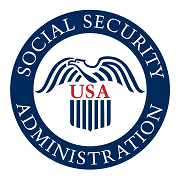Social Security Number (SSN) Masking
SSN masking, also known as Social Security Number masking, is a security practice that involves partially or fully hiding or obscuring the digits of a person's Social Security Number (SSN) to protect their privacy and reduce the risk of dentity theft. The goal of SSN masking is to limit the exposure of sensitive personal information, especially in situations where it is not necessary to display the full SSN.
Here are a few common methods of SSN masking:
Partial Masking. In this method, only a portion of the SSN is displayed. For example, the first five digits (the Area Number and Group Number) might be displayed, while the last four digits are replaced with asterisks or Xs. This is often done on documents or in situations where the full SSN is not needed for identification.
Full Masking. In some cases, especially for privacy protection, the entire SSN is obscured or replaced with asterisks or Xs. This method is often used to prevent unauthorized access to personal information in scenarios where the SSN is not essential for verification.
Truncation. Truncating the SSN involves displaying only a portion of the digits. For example, displaying only the last four digits while masking the rest can provide a level of security while still allowing for limited identification.
SSN masking is an important security measure because the Social Security Number is a critical piece of personal information that can be exploited for identity theft or fraudulent activities if it falls into the wrong hands. Masking SSNs can help protect individuals from identity theft and minimize the risk associated with displaying or transmitting sensitive personal information.
1099FIRE prints and mails all information returns with the SSN partially masked. The client can request to remove masking but we encourage masking when printing and mailing any tax forms.





